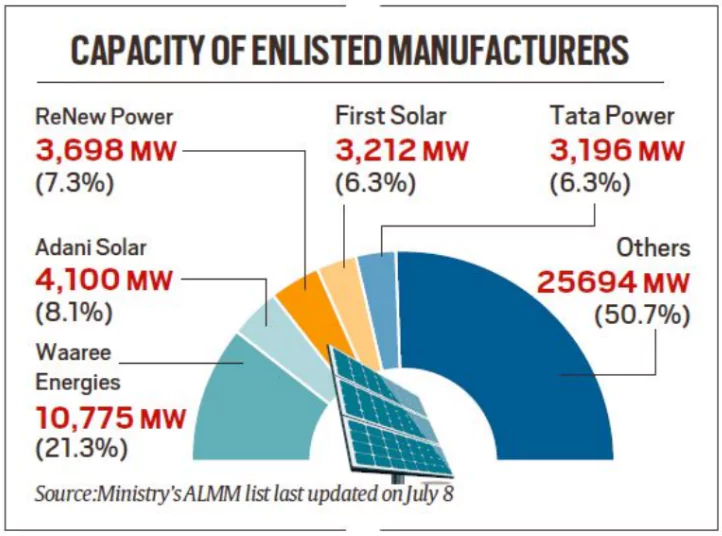Recently, the Ministry of New and Renewable Energy (MNRE) has exempted export-oriented green hydrogen projects from its solar module shortlist of domestic manufacturers.

- Objective: To enable them to lower costs to the level of grey hydrogen.
- Need: Setting up renewable energy capacity is essential for the production of green hydrogen and contributes significantly to project costs.
- Earlier Action: The exemption for green hydrogen projects set up in special economic zones (SEZs) or export oriented units (EOUs) by 2030 from MNRE’s Approved List of Models and Manufacturers (ALMM) was granted in May earlier this year.
Enroll now for UPSC Online Course
About Green Hydrogen Projects

These are initiatives that aim to produce and use green hydrogen, a clean energy source that’s made by splitting water with renewable electricity.
- Green hydrogen is a key part of the global effort to limit global warming and reduce reliance on fossil fuels.
- About National Green Hydrogen Mission: This mission was approved in January 2023.
- Goal: To make India a global hub for green hydrogen production, use, and export.
- It also aims to develop supply chains for transporting and distributing hydrogen.
About Green Hydrogen
Green Hydrogen refers to a hydrogen produced by the electrolysis of water, that is splitting water into hydrogen and oxygen using renewable electricity.
- Aim: To limit global warming to 1.5 degrees Celsius and reduce fossil fuel dependency by replacing green hydrogen.
- Production: Green hydrogen is traditionally produced from methane (CH4), split with steam into CO2 (GreenHouse Gas) and H2 (Hydrogen).
- Applications:
- Used directly as a fuel for internal combustion
- Blended with natural gas and used as fuel for heat or power generation
- Used in the hydrogen fuel cell to run vehicles
- Used in Fertilizer and Steel Industries
Check Out UPSC CSE Books From PW Store
Other different types of Hydrogen Production

Following are the various different types of hydrogen:
- Grey Hydrogen: The most commonly used form of hydrogen today, derived from natural gas and typically uses fossil fuels as the energy source.
- Blue Hydrogen: Generated with the same process as grey hydrogen, but most of the carbon emitted during its production is “captured” and not released in the atmosphere.
About Special Economic Zones (SEZs)
- These areas within a country have different business and trade laws than the rest of the country.
- SEZs are typically duty-free and offer fiscal concessions.
- Aim: To increase trade, investment, and employment, and to promote exports.
- SEZ policy in India was first implemented on April 1, 2000.
- About 64% of the SEZs are located in five states – Tamil Nadu, Telangana, Karnataka, Andhra Pradesh and Maharashtra
About Export Oriented Units (EOUs)
- EOUs are a scheme of the Indian government to promote exports and increase foreign exchange earnings.
- Establishment: EOUs are established under the provisions of the Foreign Trade (Development and Regulation) Act, 1992, and the Export Import Policy.
- Regulation: These are regulated by the Directorate General of Foreign Trade (DGFT)
Initiatives for Green Hydrogen Production In India
- National Green Hydrogen Mission, January 2023
- Green Hydrogen Policy, February 2022
- Strategic Interventions for Green Hydrogen Transition (SIGHT) Programme
- Exemption of Inter-State Transmission Charges
- India Hydrogen Alliance
|
![]() 5 Sep 2024
5 Sep 2024



